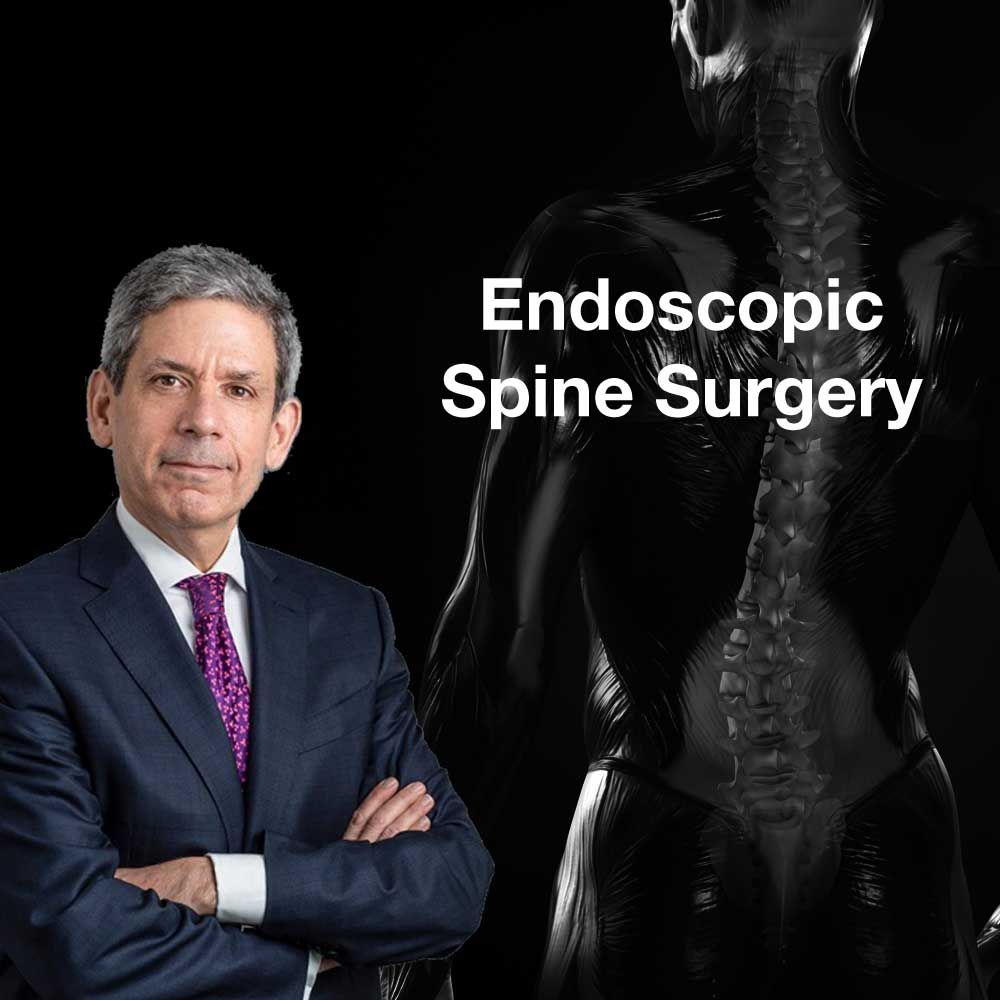Endoscopic Spine Surgery
What Is An Endoscope?
While endoscopic surgery is a general term, laparoscopic, thoracoscopic, and arthroscopic surgery describe endoscopic surgery within the abdomen, thoracic cavity, and joint spaces, respectively. In most instances, the endoscopic technique attempts to duplicate the same surgical techniques and principles as the corresponding open techniques, with the only difference being surgical access.
Endoscopy means "looking inside" and typically refers to looking inside the body for medical reasons using an endoscope, which is an instrument used to examine the interior of a hollow organ or cavity of the body. Unlike most other medical imaging devices (x-ray, MRI, etc.), endoscopes are inserted directly into the organ.
An endoscope may consist of the following parts
- a rigid or flexible tube which is inserted through an incision
- a light delivery system to illuminate the area being viewed. The light source is normally outside the body and the light is usually directed via an optical fiber system
- a lens system transmitting the image to the viewing device
- an eyepiece
- an additional tube or channel to allow entry of medical instruments to perform the surgery
What Is An Endoscopic Spine Surgery?
Endoscopic spine surgery (ESS) is a minimally invasive surgical procedure that uses a small incision and specialized instruments to surgically treat spinal disorders. ESS is most useful for patients with disk protrusions, especially foraminal and extraforaminal disk protrusions, where the standard approach would involve more removal of supportive bony structures. The minimally invasive approaches with small retractors, tubes, or endoscopy result in fewer permanent biomechanical alterations following elective spinal surgery . ESS can be used to treat a variety of spinal disorders and conditions including disc herniation, spinal stenosis, degenerative disc disease requiring spinal stabilization, foraminal stenosis, disc degeneration, facet syndrome, spondylolisthesis, and sciatica.
ESS is in a group of advanced, state-of-the-art minimally invasive spine surgery techniques designed to provide the patient with a quicker recovery time and less recurring pain than traditional spine surgery methods. ESS and other minimally invasive approaches can help preserve normal range of spine mobility post-operatively. During an endoscopic procedure, the surgeon makes a small incision and gently divides the muscles to provide a small path for the endoscope to reach the spine. The endoscopic camera projects the images onto a monitor so the surgeon can visualize the anatomy & pathology. Small instruments are then inserted through the working channel to remove the problematic bone spurs, thickened ligament, or herniated disc material.
Unlike traditional surgery, endoscopic or mimally invasive techniques result in less damage to the surrounding spinal structures. Tubular or small retractors reduce the need to cut through soft tissues (e.g., skin tissue-to-muscle injury or damage), which results in less blood loss and less post-operative discomfort or pain. ESS may not be appropriate for all spine surgery indications, such as scoliosis, spinal instability, cancer, or trauma.
Endoscopic spine surgery is an innovative technique that offers many benefits over some traditional open surgery methods. It is most useful for patients with disk protrusions where the standard approach would involve more removal of supportive bony structures. Dr. Goldstein is a top expert in this field with extensive experience in treating lumbar, thoracic and cervical disorders using minimally invasive techniques. His expertise in minimally invasive spine surgery has resulted in his recognition as one of New York's "Best Doctors" by New York Magazine for 10+ years .
Dr. Jeffrey Goldstein, Director of Education, Division of Spine Surgery and Director of the Spine Surgery Fellowship at NYU Langone Orthopedics, Director of Spine Fellowship at NYU Langone Orthopedics and Clinical Professor of Orthopedic Surgery and Neurosurgery is an orthopedic spine surgeon at NYU Langone Orthopedic Hospital, is a top expert in minimally invasive spine surgery, robotic spine surgery, and artificial disc replacement. He has been nationally and internationally recognized for his expertise in these areas. His primary professional interests relate to minimally invasive spine surgery, cervical and lumbar artificial disc replacement, sports-related spine injuries, scoliosis, and surgical treatment of the cervical, thoracic, and lumbosacral spine. He is also involved in the research and development of biomedical materials and devices.
Dr. Goldstein's surgical expertise treats lumbar, thoracic, and cervical disorders, including degenerative diseases, disc herniation, spinal stenosis, deformity, spondylolisthesis, trauma, tumors, and infections affecting the spine. Dr. Goldstein has authored numerous book chapters and articles that have been published nationally and internationally. He has also offered his expertise on programs featured on ABC, CBS, NBC, FOX, CNN; on Sirius XM Doctor Radio; and in USA Today and Forbes.
